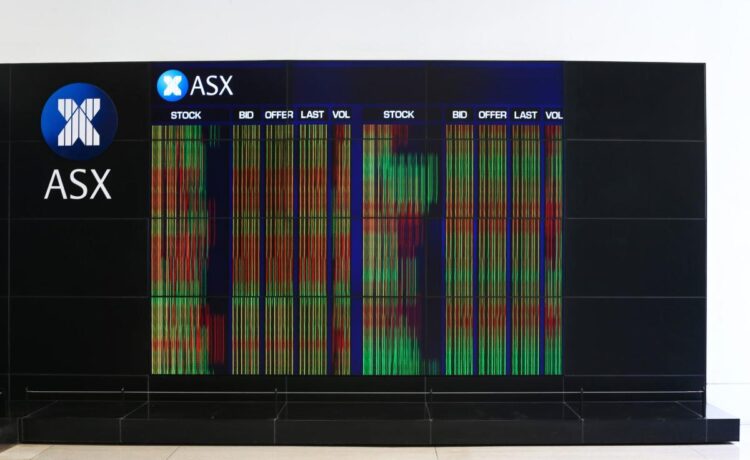(Bloomberg) — A cross-asset rally in Asian markets following the Federal Reserve’s signals of rate cuts next year may extend into 2024, according to analysts.
Most Read from Bloomberg
The MSCI Asia Pacific Index surged 1.7% Thursday, led higher by Australian, Korean and Chinese shares as tech stocks climbed. Bonds rallied through the region including in Japan and Indonesia, while the Bloomberg Asia Dollar Index rose as much as 0.9%, the biggest jump since March. Credit spreads narrowed.
The moves in Asia point to a broader rally in developing-nation assets Thursday as traders price the prospect the Fed will begin cutting interest rates as early as March. Traders are now awaiting the Bank of England and European Central Bank meetings to determine whether developed-market peers are at the cusp of a global easing cycle.
“To EM Asia, this is good news” after a year in which global central banks raised rates fairly aggressively, Ken Cheung, chief Asian FX strategist at Mizuho Bank, said on Bloomberg Television. “These headwinds are likely to become tailwinds for next year and this will pave the way for EM Asia currencies rally for the next year.”
Here’s what else money mangers, analysts and strategists had to say:
Kellie Wood, deputy head of fixed income at Schroders Plc in Sydney:
“The Fed has delivered an early Christmas present to markets. The next move is a cut and markets are now anticipating a faster and sharper easing cycle given Powell’s comments around cutting rates well before they reach their inflation target. Strong performance across all markets today, risk on move given the Fed will look to engineer a soft landing”
Kerry Craig, global market strategist at JPMorgan Asset Management in Melbourne:
“It appears that investors will not be getting a lump of coal in their stockings this Christmas. If the U.S. can avoid a recession as suggested by the economic projections, then this would benefit the wider Asian region, given earnings are highly correlated to export growth and we may see a resumption of inventory restocking cycle.
However, with the risk of a US recession only diminished, not gone, its best to take a defensive approach in Asian equities and focus on income and high dividend payers. In Australia, the fall in yields and slowing economic outlook tilts our view toward longer duration and more defensive segments of the equity market such as health care and technology”
Steve Englander, head of global G-10 FX research and North America macro strategy at Standard Chartered Bank:
“We see the Fed stance as positive for risk appetite and a plus for higher-beta currencies. For high-yielding currencies, the yield premium may now be seen as a real yield premium rather than as a risk premium, making them far more attractive. We continue to see USD/JPY downside as attractive given the likelihood of a narrowing of the large divergence in policy rates”
Chamath De Silva, a senior fund manager at BetaShares Holdings in Sydney:
“I expect a decent rally. We had a pretty epic bull steepening in Treasuries on the back of it and a textbook dovish pivot response in stocks and the US dollar should bode well for Asian equities. The exception might be Japan, which will have to deal with big yen strength”
Brad Bechtel, global head of foreign exchange at Jefferies in New York:
Aussie, Norwegian krone and kiwi, to some extent, look interesting as those central banks are still holding a hawkish stance. “Owning Aussie against the dollar, pound and euro may turn out to be a great trade over coming weeks,” he said
Asian emerging market currencies “should continue to trade strong, but we’ll see if central banks support the dollar there to reduce volatility,” he said. Korean won, Taiwan dollar to “rally the most” while Indian rupee, Philippine peso and Chinese yuan will be generally more supported, he said
Amy Xie Patrick, head of income strategies at Pendal Group in Sydney:
Australian bonds to benefit from the rally in Treasuries, though “to talk about cuts for the RBA now is premature given that we are still waiting for confirmation that wage pressures here have peaked. But being pulled along for some of the ride in the US — I don’t mind that.”
Carol Kong, a currency strategist at Commonwealth Bank of Australia in Sydney:
“Aussie dollar may be able to extend its gains in the Asia session as market participants digest the FOMC’s announcement. Today’s Australian labour force data may also provide some support to AUD/USD.” Indications of a tight labor market would keep “the threat of another RBA rate hike alive and AUD/USD supported,” she said.
Brendan McKenna, emerging market strategist at Wells Fargo in New York:
“Most of EM Asia can perform well, but I think the outperformers can be currencies like Philippine peso, Korean won and Indonesian rupiah. Currencies that are associated with economies integrated into the global economy and where rates are unlikely to come down in the near future”
Kyle Rodda, senior analyst at Capital.com in Melbourne:
“Lower rates are good for the region’s tech valuations while lower dollar and easier financial conditions takes the pressure off property and marginally improves systemic risks. In Australia, real estate and tech valuations should be in focus today. Nikkei might go the other way because the yen ripped and Japanese stocks hate that”
Winson Phoon, head of fixed income research at Malayan Banking Bhd in Singapore:
“A positive spillover from the overnight rally in US Treasuries is likely following the Fed pivot benefiting both EM Asia FX and bonds.”
“Higher yielder IndoGB may outperform today. IndoGb look well positioned to receive increased foreign inflows, at least from a tactical standpoint given the prevailing risk-on mode on Fed pivot. Bank Indonesia has plenty of room to roll back previous hikes, including the knee-jerk hike in October which happened at the height of US dollar strength and US Treasury selloff. I’m not ruling out a cut as early as the next BI meeting”
Chetan Seth, Asia ex-Japan equity strategist at Nomura:
“For now, positive momentum in stocks may sustain in the near term.”
“We maintain our view that 2024 should be a better year for Asia ex-Japan stocks. Our MSCI Asia ex-Japan target by end-2024 is 673. The three pillars of our constructive view are: strong earnings growth recovery in 2024 driven by recovery in semi or chip sector or China, stabilization in valuations or softer US dollar on peak Fed rates, and now the prospects of insurance rate cuts in the US, which should significantly reduce the risk of a hard landing in the US, and better fund flow environment.”
Ken Cheung, chief Asian FX strategist at Mizuho Bank:
“It looks like major central banks are entering the rate-cut cycle, so we believe the Fed is not the only one to deliver rate cuts. ECB could be even ahead of the Fed. To EM Asia, this is good news because this year we know that the major central banks are quite aggressively raising their interest rates. So these headwinds are likely to become tailwinds for next year and this will pave the way for EM Asia currencies rally for the next year,” he said on Bloomberg TV.
–With assistance from Garfield Reynolds.
(Updates with market moves starting in first paragraph.)
Most Read from Bloomberg Businessweek
©2023 Bloomberg L.P.

















